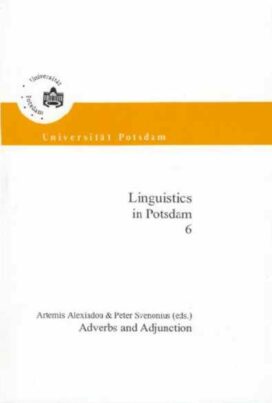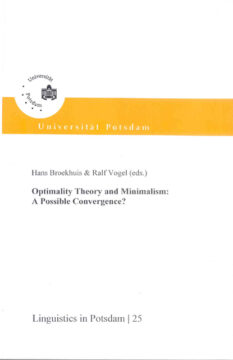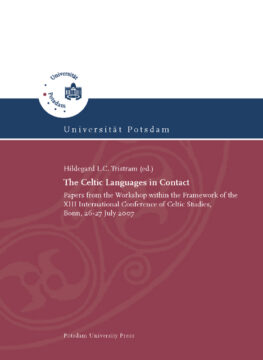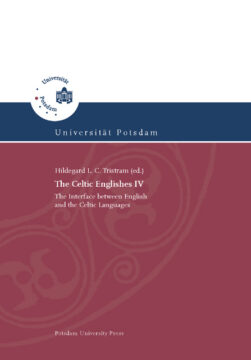The papers collected in this volume were all presented at the workshop on Adverbs and Adjunction, held at the University of Tromsoe, in April 17-18, 1999. The presentations by Kristin M. Eide & Inghild Flaate, Henriette de Swart, Artemis Alexiadou and Adam Wyner could not be included here.
The articles deal with the syntax, semantics and morpbology of adverbs and their interaction with other syntactic phenomena. A number of tbe contributions is concerned with an evaluation of the hypothesis that adverbs are specifiers of functional heads, which are universally ordered. Specifically, Adger &Tsoulas argue that locative adverbials are licensed by an aspectual head that encodes telicity, while manner adverbials are licensed by a light verb that encodes agentivity, both being situated low in the VP structure. According to the authors, the prime function of these heads is to license aspects of the featural composition of the object, and the licensing of these low adverbials is a by-product of the way that the EPP features of these heads functions. Costa presents data from European Portuguese in support of the traditional analysis of adverbs as adjuncts. Ernst shows that manner, measure, and domain adverbs, and more generally, adverbs and other adjuncts such as participant PPs and adjunct secondary predicates (depictives), are not rigidly ordered. Hence the paper supports theories where linear order is largely a function of the interaction of compositional rules for the various adjuncts, plus their lexico-semantic requirements.
For Haider, adverbials are adjoined or embedded, depending on the relation to the head of the containing phrase: they are adjoined if they precede the head of the containing phrase. They are embedded if they follow the head of tbe containing phrase. But the relative order of adverbials is a reflex of an interface condition. Moreover, the order pattern of adverbials in the extraposition domain is a function of linear incrementality in a non-compositional subdomain. Laenzlinger, on the other hand, claims that adverbs occupy the A’-specifier of their semantically related functional projection. They are formally licensed via the mechanism of feature checking, which links their distribution to their interpretation. He also considers adverb placement and its interaction with Verb/Argument Movement, fronting and extraposition. The interaction between A-scrambling and adverb placement crosslinguistically is also investigated by Hoffman in a minimalist framework. He claims that adverbs can be pronounced in any set of syntactic positions, but the choice among the various positions is made on non syntactic grounds.
Two papers are concerned with adverbial case. Pereltsvaig examines nominal adverbials marked with Accusative Case, with particular focus on Russian and Finnish. She shows that Accusative adverbials exhibit object-like behavior. She argues that Accusative Case is related to aspectual properties of the VP, and it is thus argued that Structural Accusative Case is checked in [Spec, AspP]. But not all occurrences of morphological accusative case derive from Structural Accusative Case. Thus, the contrasts between Russian and Finnish are explained by the claim that Russian uses accusative case marking for NPs in default objective Case position, whereas Finnish uses partitive in the same position. Manninen shows that in Finnish- adverbs can be analyzed as a sub-category of adjectives and nouns, as they are really case-inflected adjectives and nouns. Manninen proposes that these bear lexical ‘adverb’ case, i. e. that is they have the form of K(asus;Kase)Ps.
Finally, Vegnaduzzo investigates the polysemy of the ltalian adverb ancora showing that this is only apperent. She argues that all the different readings depend upon the context where it is inserted: each reading is derived by compositionality of ancora basic meaning and the semantic properties of the argument structure of the verb.
The editors
Artemis Alexiadou and Peter Svenonius





